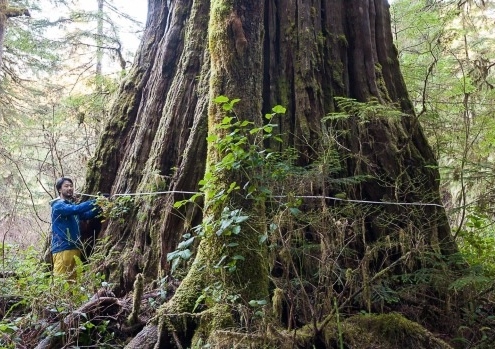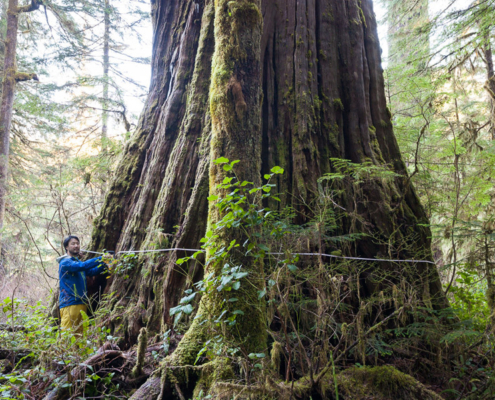
Group says giant trees an aid to climate change
See this article in GlobalNews about the call from conservationists for the BC government to act on climate change by protecting giant trees and surrounding old-growth forest in the Central Walbran Valley!

‘Tolkien Giant’ tree at root of B.C. climate change appeal
"Conservationists who want the government to take action on climate change by protecting B.C.'s old-growth forests say they've measured a near-record-size red cedar in Vancouver Island's central Walbran Valley.
The Ancient Forest Alliance said the tree that it calls the Tolkien Giant is the ninth-widest western red cedar in the province, according to a list compiled by the University of B.C.'s forestry faculty.
It said the tree has a circumference of 14.4 metres, or 47 feet, stands 42 metres high and lies within a protected reserve.
However, logging is proposed for an area 200 metres away that includes another huge tree the alliance calls the Karst Giant, executive director Ken Wu said Friday.
"Outside the central Walbran, the rest of the upper Walbran is tattered like Swiss cheese. So it means that the little remnants of old-growth are surrounded by clearcuts.
"The issue is large-scale industrial logging throughout the central Walbran valley and for this particular tree, they've already cut the other side of the river so they want to ring this area with clearcuts."

Conservationists Measure Near Record-Size Cedar in the Endangered Central Walbran Valley
Conservationists with the Ancient Forest Alliance have located and measured two huge western redcedar trees, one of which makes it into the top 10 widest redcedars in BC, in the endangered Central Walbran Valley on Vancouver Island. The “Tolkien Giant” comes in as the 9th widest western redcedar in BC, according to the BC Big Tree Registry.
